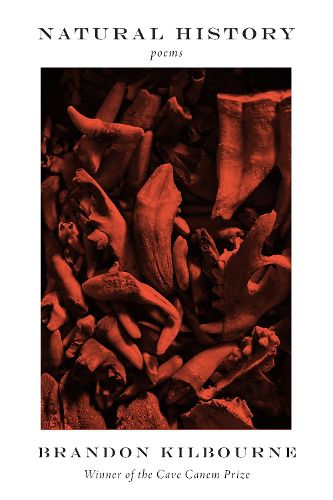Readings Newsletter
Become a Readings Member to make your shopping experience even easier.
Sign in or sign up for free!
You’re not far away from qualifying for FREE standard shipping within Australia
You’ve qualified for FREE standard shipping within Australia
The cart is loading…






A research biologist most recently at the Museum fuer Naturkunde in Berlin, Brandon Kilbourne illuminates the intersections between science and poetry in poems that demonstrate the wonder, curiosity, and precision required by both disciplines.
Natural History opens by confronting the hidden histories within the study of biology and its links to colonialism, including the revelation that European scientists used slave ships to transport specimens from Africa and the Americas back to Europe. Across the collection, Kilbourne describes how these histories of exploitation are still reflected in dioramas of elephants, rhinoceroses, and African people displayed in natural history museums. Other poems narrate the intricate work of studying fossils, and a longer sequence recounts an expedition above the Arctic Circle to recover evidence of how a fish's fins gave rise to the diversity of limbs found among amphibians, reptiles, birds, and mammals.
Natural History is a rare and fascinating debut, and Kilbourne's exquisite eye brings the role of the working biologist to life.
$9.00 standard shipping within Australia
FREE standard shipping within Australia for orders over $100.00
Express & International shipping calculated at checkout
A research biologist most recently at the Museum fuer Naturkunde in Berlin, Brandon Kilbourne illuminates the intersections between science and poetry in poems that demonstrate the wonder, curiosity, and precision required by both disciplines.
Natural History opens by confronting the hidden histories within the study of biology and its links to colonialism, including the revelation that European scientists used slave ships to transport specimens from Africa and the Americas back to Europe. Across the collection, Kilbourne describes how these histories of exploitation are still reflected in dioramas of elephants, rhinoceroses, and African people displayed in natural history museums. Other poems narrate the intricate work of studying fossils, and a longer sequence recounts an expedition above the Arctic Circle to recover evidence of how a fish's fins gave rise to the diversity of limbs found among amphibians, reptiles, birds, and mammals.
Natural History is a rare and fascinating debut, and Kilbourne's exquisite eye brings the role of the working biologist to life.